October 5, 2023

Abdou Ndiaye, Meghana Gaur, John R. Grigsby, and Jonathon Hazell's "Bonus Question: Does Flexible Incentive Pay Dampen Unemployment Dynamics?"
We introduce dynamic incentive contracts into a model of unemployment dynamics and present three results. First, wage cyclicality from incentives does not dampen unemployment dynamics: the response of unemployment to shocks is first-order equivalent in an economy with flexible incentive pay and without bargaining, vis-á-vis an economy with rigid wages. Second, wage cyclicality from bargaining dampens unemployment dynamics through the standard mechanism. Third, our calibrated model suggests 46%..
July 31, 2023
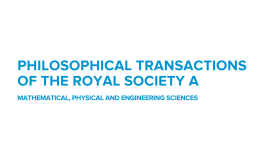
Adam Brandenburger, Patricia Contreras-Tejada, Pierfrancesco La Mura, Giannicola Scarpa, and Kai Steverson's "Agreement and Disagreement in a Non-Classical World," published in Philosophical Transactions of the Royal Society A
The Agreement Theorem (Aumann, 1976) states that if two Bayesian agents start with a common prior, then they cannot have common knowledge that they hold different posterior probabilities of some underlying event of interest. In short, the two agents cannot "agree to disagree." This result applies in the classical domain where classical probability theory applies. But in non-classical domains, such as the quantum world, classical probability theory does not apply. Inspired principally by their...
july 31, 2023

Adam Brandenburger, Amanda Friedenberg, and H. Jerome Keisler's "The Relationship Between Strong Belief and Assumption," published in Synthese
We define two maps, one map from the set of conditional probability systems (CPS's) onto the set of lexicographic probability systems (LPS’s), and another map from the set of LPS's with full support onto the set of CPS's. We use these maps to establish a relationship between strong belief (defined on CPS's) and assumption (defined on LPS's). This establishes a relationship at the abstract level between these two widely used notions of belief in an extended probability-theoretic setting.
may 30, 2023

Chris Conlon, Nathan Miller, Tsolmon Otgon, and Yi Yao's "Rising Markups, Rising Prices?" published in the American Economic Association Papers and Proceedings
The rise in markups and market power documented by De Loecker, Eeckhout, and Unger (2020) has recently generated much discussion in economics. We measure the correlation between the change in firm level markups and the change in industry level prices as measured by the Producer Price Index and find little to no relationship both for 1980–2018 and 2018–present. While a "false negative" result due to mismeasurement is possible, it also raises the possibility that firms have not passed along...
May 30, 2023
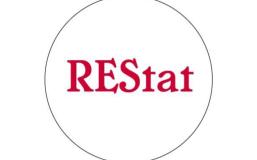
Paul Scott, Adrian Torchiana, Ted Rosenbaum, and Eduardo Souza-Rodrigues' "Improving Estimates of Transitions from Satellite Data: A Hidden Markov Model Approach" published in The Review of Economics and Statistics
Satellite-based image classification facilitates low-cost measurement of the Earth's surface composition. However, misclassified imagery can lead to misleading conclusions about transition processes. We propose a correction for transition rate estimates based on the econometric measurement error literature to extract the signal (truth) from its noisy measurement (satellite-based classifications). No ground-truth data is required in the implementation. Our proposed correction produces...
December 15, 2022

Adam Brandenburger, Ye Jin, and Zhen Zhou's "Coordination via delay: Theory and experiment," published in Games and Economic Behavior
This paper studies the effect of introducing an option of delay in coordination games—that is, of allowing players to wait and then choose between the risk-dominant and payoff-dominant actions. The delay option enables forward-induction reasoning to operate, whereby a player's waiting and not choosing the risk-dominant action right away signals an intention to choose the payoff-dominant action later. If players have ϵ-social preferences—they help others if they can do so at no cost to...
October 12, 2022

Adam Brandenburger and Stefan Bucher's "Divisive Normalization is an Efficient Code for Multivariate Pareto-Distributed Environments," published in PNAS
Divisive normalization is a canonical computation in the brain, observed across neural systems, that is often considered to be an implementation of the efficient coding principle. We provide a theoretical result that makes the conditions under which divisive normalization is an efficient code analytically precise: We show that, in a low-noise regime, encoding an n-dimensional stimulus via divisive normalization is efficient if and only if its prevalence in the environment is described by...
October 12, 2022

Adam Brandenburger, Pierfrancesco La Mura, and Stuart Zoble's "Rényi Entropy, Signed Probabilities, and the Qubit," published in Entropy
The states of the qubit, the basic unit of quantum information, are 2×2 positive semi-definite Hermitian matrices with trace 1. We contribute to the program to axiomatize quantum mechanics by characterizing these states in terms of an entropic uncertainty principle formulated on an eight-point phase space. We do this by employing Rényi entropy (a generalization of Shannon entropy) suitably defined for the signed phase-space probability distributions that arise in representing quantum states.
July 12, 2022

Luis Cabral and Gabriel Natividad's "Bundling Sequentially Released Durable Goods," published in the Journal of Industrial Economics
Suppose two durables are sequentially released and suppose that consumer valuations of these goods are positively correlated. By the time the second good is released, high-valuation buyers are out of the market for the first good. Therefore, a bundle can be targeted at the low-valuation consumers without violating the high-valuation consumers' incentive compatibility constraint. We test the model's predictions on data from retail DVD sales in the 2000's. Consistent with theory, our estimates...
June 16, 2022

Larry White's "The Dead Hand of Cellophane and the Federal Google and Facebook Antitrust Cases: Market Delineation Will Be Crucial" published in The Antitrust Bulletin
The U.S. Department of Justice (DOJ) and Federal Trade Commission (FTC) monopolization cases against Google and Facebook, respectively, represent the most important federal nonmerger antitrust initiatives since (at least) the 1990s. As in any monopolization case, market delineation will be a central feature of both cases—as it was in the du Pont Cellophane case of sixty-five years ago. Without a delineated market, how can one determine whether a company has engaged in monopolization?
June 16, 2022

Larry White's guest article, "A Riff and a Half on the Delineation of Relevant Markets in Antitrust Cases" in the Network Law Review
Excerpt from the Network Law Review -- "In this note, I wish to make two points. First – and most important: A satisfactory paradigm for delineating relevant markets in unilateral monopolization cases – which involve allegations of restrictive, exclusionary, and/or predatory actions, or abuse of dominance – has not yet appeared in the litigation of monopolization cases. Unfortunately, the market delineation paradigm that has been successfully used for delineating relevant markets for..."
October 26, 2021

Michael Dickstein, Kate Ho, and Nathaniel Mark's new NBER working paper, "Market Segmentation and Competition in Health Insurance"
In the United States, households obtain health insurance through distinct market segments. We explore the economics of this segmentation by comparing coverage provided through small employers versus the individual marketplace. Using data from Oregon, we find households with group coverage spend 26% less on covered health care than households with individual coverage yet face higher markups. We develop a model of plan choice and health spending to estimate preferences in both markets and...
May 28, 2021
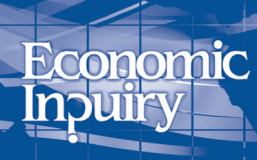
Luis Cabral and Lei Xu's "Seller reputation and price gouging: Evidence from the COVID-19 pandemic," published in the Economic Inquiry
From mid-January to March 2020, 3M masks sold on Amazon by third party sellers were priced 2.4 times higher than Amazon's 2019 price. However, this price increase was not uniform across sellers. We estimate that when Amazon is stocked out (one of our measures of scarcity) new (entrant) sellers increase price by 178%, whereas the continuing sellers' increase is limited to 56.7%. This is consistent with the idea that seller reputation limits the extent of profitable price gouging. Similar...
May 20, 2021

Niklas Engbom's "Contagious Unemployment," published by the Centre for Economic Policy Research
Recent micro evidence of how workers search for jobs is shown to have critical implications for the macroeconomic propagation of labor market shocks. Unemployed workers send over 10 times as many job applications in a month as their employed peers, but are less than half as likely per application to make a move. I interpret these patterns as the unemployed applying for more jobs that they are less likely to be a good fit for. During periods of high unemployment, it consequently becomes harder...
May 11, 2021

Paul Scott, Jonathan Elliott, Georges V. Houngbonon, and Marc Ivaldi's "Market Structure, Investment and Technical Efficiencies in Mobile Telecommunications," published by the Centre for Economic Policy Research
Paul Scott and coauthors develop a model of competition in prices and infrastructural investment among mobile network providers. Market shares and service quality (download speed) are simultaneously determined, for demand affects the network load just as delivered quality affects consumer demand. While consolidation typically has adverse impacts on consumer surplus, economies of scale push in the other direction. Consumer surplus is maximized at a moderate number of firms, and that the...
February 1, 2021

Larry White's "Rethinking Antitrust," published in the Milken Institute Review
Antitrust policy in the U.S. has recently gained an unusual amount of media attention. There are critics who have argued that a major overhaul of antitrust policy is needed. This paper argues that instead there are some important but more modest changes that could go a long way toward significantly strengthening the role that antitrust can play in keeping the U.S. economy competitive, vibrant, and innovative.
February 1, 2021

Paul Wachtel, Moritz Kuhn, Alina Bartscher, and Moritz Schularick's "Monetary Policy and Racial Inequality," published by the Federal Reserve Bank of New York
This paper aims at an improved understanding of the relationship between monetary policy and racial inequality. We investigate the distributional effects of monetary policy in a unified framework, linking monetary policy shocks both to earnings and wealth differentials between black and white households. Specifically, we show that, although a more accommodative monetary policy increases employment of black households more than white households, the overall effects are small. At the same time...
December 18, 2020

Adam Brandenburger, Alexander Danieli, and Amanda Friedenberg's "The Implications of Finite-Order Reasoning," forthcoming in Theoretical Economics
The epistemic conditions of rationality and mth-order strong belief of rationality (RmSBR, Battigalli and Siniscalchi, 2002) formalize the idea that players engage in contextualized forward-induction reasoning. This paper characterizes the behavior consistent with RmSBR across all type structures. In particular, in a class of generic games, R(m −1)SBR is characterized by a new solution concept we call an m-best response sequence (m-BRS). Such sequences are an iterative version of...
December 18, 2020

Adam Brandenburger, Amanda Friedenberg, and Terri Kneeland's "Two Approaches to Iterated Reasoning in Games"
Level-k analysis and epistemic game theory are two different ways of investigating iterative reasoning in games. This paper explores the relationship between these two approaches. An important difference between them is that level-k analysis begins with an exogenous anchor on the players’ beliefs, while epistemic analysis begins with arbitrary epistemic types (hierarchies of beliefs). To close the gap, we develop the concept of a level-k epistemic type structure, that incorporates the...
November 17, 2020

Larry White and John Kwoka's "The “Antitrust Revolution” and The Antitrust Revolution: A Perspective from the Inside" published in The Antitrust Bulletin
There clearly has been a revolution in the way that modern microeconomics has come to occupy a central role in the development of antitrust policy and in the structuring of antitrust cases over the past forty years or so. And during the past thirty plus years, there have been seven editions of The Antitrust Revolution that we have edited. In this essay, we offer our perspective on the “antitrust revolution,” as well as provide an insiders’ view of those seven editions and how they came to be.
October 26, 2020

Luis Cabral, Ajay Bhaskarabhatla, Deepak Hegde, & Thomas Peeters' "Are Inventors or Firms the Engines of Innovation?" published in Management Science
In this study, we empirically assess the contributions of inventors and firms for innovation using a 37-year panel of U.S. patenting activity. We estimate that inventors’ human capital is 5–10 times more important than firm capabilities for explaining the variance in inventor output. We then examine matching between inventors and firms and find highly talented inventors are attracted to firms that (i) have weak firm-specific invention capabilities and (ii) employ other talented inventors...
October 21, 2020

Larry White's "Antitrust Economics and Consumer Protection Economics in Policy and Litigation: Why the Disparity?" published in the Economic Inquiry
The article argues that the disparity between the greater attention that economics has given to antitrust policy versus the lesser attention to consumer protection policy is due to 3 causes: a) the longer intellectual history and development of industrial organization; the history and culture of the Federal Trade Commission (where both policies are supposed to be pursued); and the splintering of consumer protection policy among a large number of federal and state agencies.
September 28, 2020
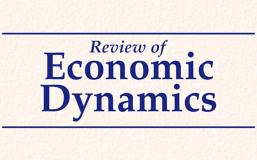
Thomas Cooley and Vincenzo Quadrini on The twenty-fifth anniversary of “Frontiers of Business Cycle Research"
Preface by Tom Cooley
It is very gratifying to have a conference celebrating the 25th Anniversary of the publication of Frontiers of Business Cycle Research (Cooley (1995)). I am deeply grateful to all who have contributed papers to the conference and to this special Volume of The Review of Economic Dynamics. It is especially significant to me since, in addition to putting together Frontiers, I was the founding editor of RED. It is clear from the diverse set of papers presented here that...
September 24, 2020

Richard Sylla on changes in the structure of US banking, forthcoming in the Financial History Review
A century ago the US commercial banking system was exceptional in two ways. It was by good measure the largest commercial banking system of any country. And it was different from the commercial banking systems of other leading countries in having tens of thousands of independent banks with very few branches rather than the more typical pattern of a far smaller number of banks with many branches. Today, a century later, the US system is more normal than exceptional, dominated by a small number...
September 21, 2020
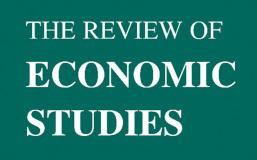
Thomas Cooley, Ramon Marimon, and Vincenzo Quadrini's "Commitment in Organizations and the Competition for Talent," published in the Review of Economic Studies
We show that a change in organizational structure from partnerships to public companies—which weakens contractual commitment—can lead to higher investment in high return-and-risk activities, higher productivity (value added per employee) and greater income dispersion (inequality). These predictions are consistent with the observed evolution of the financial sector where the switch from partnerships to public companies has been especially important in the decades that preceded the 21st Century...
September 10, 2020

Nicholas Economides and Ioannis Lianos on Privacy and Antitrust, forthcoming in the Journal of Competition Law and Economics
We discuss how the acquisition of private information by default without compensation by digital platforms such as Google and Facebook results in a market failure and can be grounds for antitrust enforcement. To avoid the market failure, the default in the collection of personal information should be changed by law to “opt-out.” This would allow the creation of a vibrant market for the sale of users’ personal information to digital platforms. Assuming that all parties are perfectly informed...
August 18, 2020
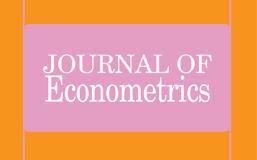
Paul Scott, Myrto Kalouptsidi, and Eduardo Souza-Rodrigues' paper on dynamic discrete models, forthcoming in the Journal of Econometrics
Prevailing approaches to estimating dynamic discrete models have difficulty accommodating endogeneity problems and omitted variables. In the context of single agent models, we show that Euler Equations in Conditional Choice Probabilities (ECCP equations) allow researchers to address these challenges in much the same way they are dealt with in the context of static econometric models: using linear regressions and instrumental variables.
August 6, 2020

Petra Moser and Michela Giorcelli's paper on the effects of copyrights on creativity, forthcoming in the Journal of Political Economy
Copyrights establish intellectual property rights in creative goods ranging from literature and science to images, music, and film. Although their primary purpose is to encourage creativity, the causal effects of copyrights on creativity have proven difficult to establish. This is due primarily to a lack of experimental variation today, when copyrights are modified in response to lobbying by the owners of particularly valuable creative goods. To address this issue, this paper exploits...
july 17, 2020

Petra Moser and Barbara Biasi's paper on the effects of copyrights on science, forthcoming in the American Economic Journal: Microeconomics
Copyrights, which establish intellectual property in music, science, and other creative goods, are intended to encourage creativity. Yet, copyrights also raise the cost of accessing existing work— potentially discouraging future innovation. This paper uses an exogenous shift towards weak copyrights (and low access costs) during WWII to examine the potentially adverse effects of copyrights on science. Using two alternative identification strategies, we show that weaker copyrights encouraged...
July 17, 2020

Walker Hanlon and Taylor Jaworski's new NBER working paper on IP Protection
Intellectual property (IP) protection, achieved through mechanisms such as patents and copyrights, is a central feature of modern innovation systems. Yet there are important aspects of IP protection that remain poorly understood. One of these is the impact of offering protection to producers of one type of good on innovation rates in other complementary goods. In "Spillover Effects of Intellectual Property Protection in the Interwar Aircraft Industry", joint with Taylor Jaworski...
July 14, 2020
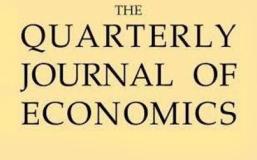
Michael Dickstein and David Chan's paper on Medicare forthcoming in the Quarterly Journal of Economics
The American Medical Association’s Relative Value Scale Update Committee (RUC) has been called “the most important health-care group you’ve never heard of.” When Medicare needs to set a price for a new or existing procedure, it turns to the physician committee for advice on the relative value of the procedure. RUC recommendations influence the annual $70 billion in Medicare spending and half a trillion dollars in other public and private spending for physician services that generally follow...
